6 Best Home Remedies To Relieve Shoulder Blade Pain
Learn to manage the shooting pain in your shoulder blade with effective natural therapies.

Image: Shutterstock
Shoulder blade pain spreads across the back of the shoulder and shoots every time you lift weights. It may interfere with your day-to-day activities. You may feel a tight knot or a sharp burning sensation between the spine and the shoulder blade. The pain may spread to your upper back and shoulders if left untreated. Luckily, several home remedies can help manage the pain and provide relief.
Multiple factors can trigger shoulder blade pain. However, the major causes are sitting in an incorrect posture, sitting for extended durations, and sleeping in the wrong posture. While it is mostly due to physical trauma, continuous shoulder blade pain may sometimes indicate an underlying medical condition.
This article discusses natural remedies that are effective for shoulder blade pain management and prevent shoulder blade pain. Continue reading to know more about them in detail.
What Is Shoulder Blade Pain?
Pain that occurs between the shoulder blades is quite common. This condition is medically known as interscapular pain, and its causes may range from simple strain to serious conditions like heart or liver problems.
Those with a painful shoulder blade usually experience a dull, aching, sore, or shooting pain in the upper back, between the shoulder blades.
Where exactly are your shoulder blades located? Let’s find out.
Key Takeaways
- Shoulder blades pain occurs at the back of the shoulder, and the pain may spread to your upper back with a sharp burning sensation between the spine and the shoulder blade.
- Sitting for extended durations and sleeping in the wrong posture can trigger shoulder blade pain.
- Ice or heat compress, Epsom salt bath, stretching, massage therapy, and usage of kinesiology tape (KT) are home remedies to treat shoulder blade pain.
Where Is Your Shoulder Blade?
The shoulder blades are triangular-shaped bones that are located at the back of your shoulders and are medically termed as scapulae.
Each of your shoulder blades connects the collarbone to the upper arm bone. It also has about three groups of muscles attached to it to aid in moving the shoulder joint.
You must have noticed that your shoulders have a wide range of motion. This is all thanks to the muscles that connect them and allow the shoulders to rotate, move up and down, side to side, and in a circle. Since your shoulders can move in so many ways, it is quite easy to injure them, leading to shoulder blade pain.
However, injuries are not the only cause of shoulder blade pain. In some cases, this pain could be an indication of distress to the nearby organs.
Discussed below are some of the main triggers of shoulder blade pain.
What Causes Pain Between The Shoulder Blades?
A muscle or tendon injury is one of the main causes of shoulder blade pain. Such injuries could result from:
- Poor posture
- Heavy weightlifting
- Working in an incorrect posture, like in the front of a computer, for several hours
- Exercising
- Physical trauma from a hit, accident, or fall
Certain medical conditions could also trigger shoulder blade or scapula pain. This is called referred pain as it occurs in the shoulder blades but due to a problem in another part of your body.
Some of the causes of a referred pain in your shoulder blades may include:
- Pulmonary issues, like a collapsed lung, clots that tend to travel from the legs to the lungs, or lung cancer.
- Cardiac causes, like a tear in the aorta of the heart, inflammation of the heart’s lining, or heart attack, especially in women.
- Problems in the back, like a slipped disc.
- Gallbladder diseases
- Liver problems
- Bone and/or joint problems, like osteoporosisi A medical condition in which bones become too brittle and weak due to a lower bone mass and inability to replace old bone tissues. , arthritis, scoliosisi A sideway curvature of the spine during adolescence with symptoms like uneven shoulders, waist, and hip. , etc.
- Musculoskeletali A framework provided by a skeleton that includes bones, ligaments, cartilage, and tendons to support body weight and posture. issues are triggered by strain, poor sleeping posture, and overuse of muscles.
- Abdominal issues from nerve pain, peptic ulcers, liver disease, or pancreatitis.
- When the nerves located in the area between the collarbone and first rib get compressed due to conditions like thoracic outlet syndrome, rotator cuff injury, or nerve impingement, it leads to pain, numbness, and weakness in the shoulders, arms and hands.
- Allergies
If the shoulder blade pain has become too unbearable for you, the best possible option is to consult a doctor to find out the cause of the pain.
How To Diagnose Shoulder Blade Pain
Your doctor may begin by asking you a few simple questions regarding your symptoms and try to figure out the possible reasons for your pain.
If the simple/common causes have been ruled out, the doctor may go ahead and perform different assessments. They may include tests like:
- Abdominal tests like an endoscopy
- Heart tests like a stress test or an electrocardiogram (EKG or ECG)
- MRI or CT scan to carry out radiological tests of the chest and back
- Blood tests to test the functioning of the liver
Once the cause of your shoulder blade pain is discovered, your doctor will discuss the treatment options with you. Serious underlying medical conditions like cancer or a heart problem may need specific treatments, for which you may be referred to a cardiologist or an oncologist.
If the cause of the pain is found to be a result of some form of physical trauma or poor posture, painkillers or ointments may be prescribed. Certain natural remedies may also assist in reducing shoulder blade pain caused by overuse or strain of muscles. They are as follows.
6 Home Remedies To Relieve Shoulder Blade Pain
1. Ice Or Heat Compress
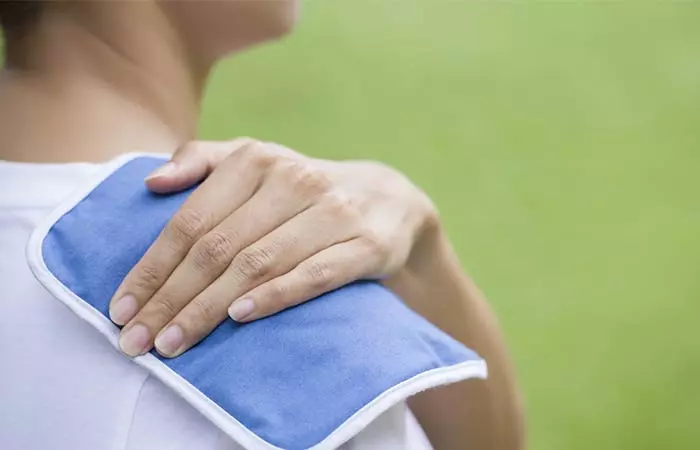
You Will Need
A hot or cold compress
What You Have To Do
- Apply an ice or heat compress to the affected area.
- Leave it on for 5-10 minutes.
- Remove and repeat twice.
How Often You Should Do This
You may do this 2-3 times daily until the symptoms improve.
Why This Works
A cold compress can help alleviate pain and swelling due to its analgesic and anti-inflammatory effects, whereas, a hot compress improves circulation, thereby helping in reducing pain
(1).
 Did You Know?
Did You Know?2. Epsom Salt Bath
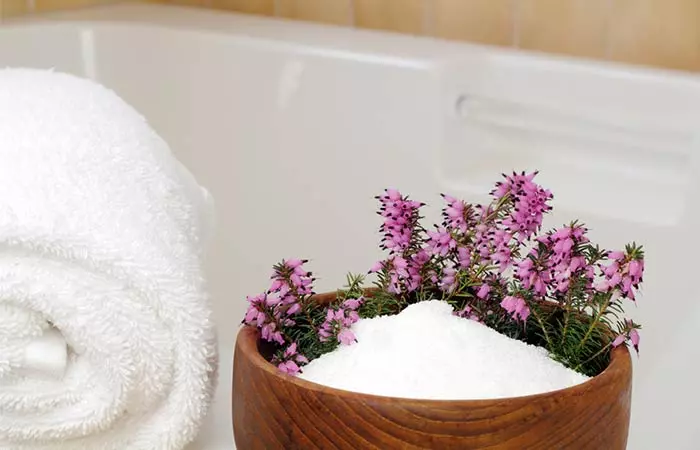
You Will Need
- 1 cup of Epsom salt
- Water
What You Have To Do
- Fill your tub with water and add a cup of Epsom salt to it.
- Allow the salt to dissolve and soak in the bath for 15-20 minutes.
How Often You Should Do This
You may do this once daily or every alternate day.
Why This Works
The magnesium content of Epsom salt can help relieve shoulder blade pain with its inflammation-reducing properties
(2).
3. Stretching

You must be familiar with the term ‘warm-ups.’ These are done before beginning any intense exercising routine. Doing a few stretches before and after workouts can help a great deal in avoiding muscle soreness post exercising, which is one of the many triggers of shoulder blade pain (3). Ask your physical trainer to suggest stretching exercises to help your muscles become more flexible.
Katie Johnson, a Triathlon coach, details how she managed shoulder pain. She first explains how a bad sitting posture can tighten the pectoral muscles and eventually tighten the muscles in the shoulder. A simple pec minor relaxing exercise proved beneficial for her. She adds, “I did this every day, followed by icing for 20 minutes, for about 5 days. My shoulder pain got better each day, and I was actually able to go back to lifting weights by day 5 (i).”
 Quick Tip
Quick Tip4. Massage Therapy

Therapeutic massage therapies can also be of great help in alleviating shoulder blade pain and the inflammation associated with it (4). While this effect may last for a short time, it is almost immediate. However, be sure to get the massage done by a professional for the best results.
5. Kinesiology Tape (KT)

You Will Need
- A KT or kinesiology tape
What You Have To Do
- Take a kinesiology tape and put it across the muscle bellies of your shoulder girdle.
- If you do not know how to use it, seek help from someone who knows how to place it properly.
- You may also take professional help or watch a tutorial for the correct application of the tape to the affected area.
How Often You Should Do This
You can keep it on for about 5 days. Reuse it only if the pain persists.
Why This Works
Taping using kinesiology tapes is aimed at improving or controlling scapular movements for patients who have shoulder problems. Its main function is to provide support to the injured individual while moving around. It can also help with short-term pain management (5).
6. Acupuncture
Acupuncture is an alternative therapy and has the potential to manage a series of chronic conditions, including shoulder blade pain. This time-honored Chinese healing technique involves the insertion of fine needles into specific pressure points on the body to prompt natural healing. The process is believed to trigger the release of endorphins and combat inflammation in the affected area.
Acupuncture can target the specific points associated with shoulder blade pain and potentially alleviate discomfort. In fact, in some studies, acupuncture was found to relieve such pain in individuals dealing with a stroke (6).
Nevertheless, acupuncture results may vary among individuals. Hence, consulting a professional is necessary to determine if this approach is suitable for your specific condition.
These remedies will help a great deal in getting rid of that stubborn pain in your shoulder blades. Additionally, you can also try shoulder impingement exercises to help relax tight muscles around the shoulder blades and relieve pain. However, it is better if you take some precautions to prevent this pain from recurring every now and then.
How To Prevent Shoulder Blade Pain
- Be cautious and avoid falls.
- Wear a seatbelt whenever you sit in a car.
- Do not jump head-on into a new workout routine. Give your body some time to get used to it.
- Change your sleeping position.
- Follow a healthy diet that is rich in nutrients to help your body stay strong.
- Get moderate exercise daily.
- Avoid sitting in the same position for too long.
- Avoid lifting heavy objects if you are not used to it.
Infographic: 5 Ways To Manage Shoulder Blade Pain At Home
Poor posture, heavy weightlifting, or an injury may cause a sharp burning sensation in your shoulders. This pain may even spread to your upper back if left untreated. The good news is you can manage your shoulder blade pain at home with simple and effective remedies. Check out this infographic to know more!

Illustration: StyleCraze Design Team
The pain between your shoulder blades may cause extreme discomfort. It may also lead to shooting pain in the upper back. But, in most cases, the pain may subside with proper treatment, rest, and posture correction. You also can check certain effective home remedies to help relieve shoulder blade pain. Using ice or heat compress, Epsom salt bath, stretching, massage therapy, and Kinesiology tape may help improve the associated pain. In addition, wearing a seatbelt, changing sleeping positions, and avoiding sitting in the same position for a long time may help prevent shoulder blade pain.
Frequently Asked Questions
Does stress cause shoulder blade pain?
Stress may lead to tightness in the neck and shoulder muscles, causing muscle strain, pain and stiffness in the area around the shoulder blades. It may also cause upper back and neck pain. It may also make the pain sensation from an existing shoulder blade injury worse.
Can acid reflux cause back pain between shoulder blades?
In severe cases of acid reflux or GERD, the pain may radiate to the area between the shoulder blades from the upper stomach and chest region.
Can shoulder blade pain be treated?
Yes, it is possible to treat shoulder blade pain. Keep in mind that the duration and type of treatment depend on the severity and cause of the pain. Minor pain can be treated through rest, pain medication, or cold or heat therapy. However, severe shoulder pain may require physical therapy or surgery.
Illustration: Best Home Remedies To Relieve Shoulder Blade Pain
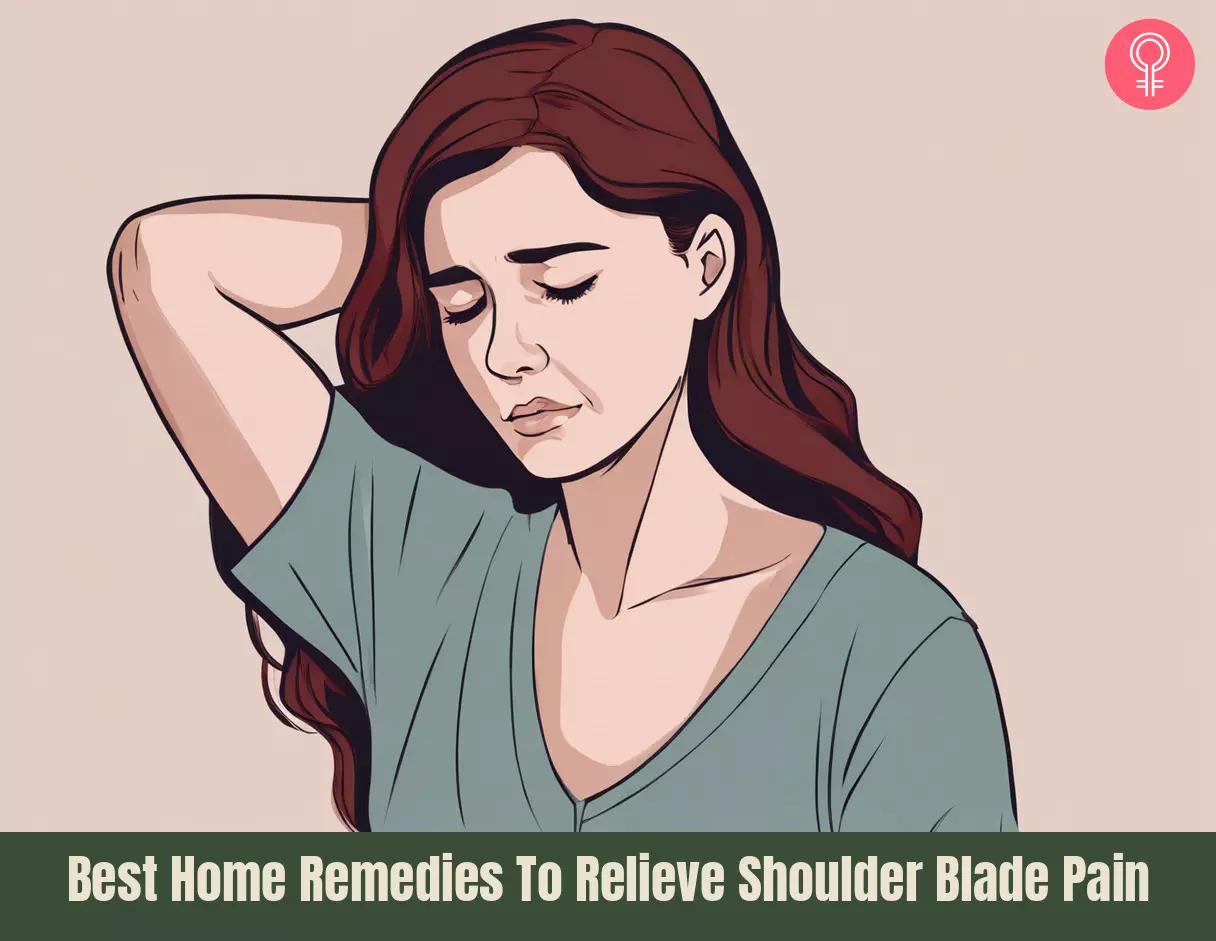
Image: Stable Diffusion/StyleCraze Design Team
Suffering from shoulder blade pain? Then, check out this informative video below featuring 4 easy ways to relieve the pain and get back to feeling your best in no time!
Personal Experience: Source
StyleCraze's articles are interwoven with authentic personal narratives that provide depth and resonance to our content. Below are the sources of the personal accounts referenced in this article.
i. One Weird Exercise That Cured My Shoulder Painhttps://medium.com/@katiewritesfitness/one-weird-exercise-that-cured-my-shoulder-pain-fd62c5e290cc
References
Articles on StyleCraze are backed by verified information from peer-reviewed and academic research papers, reputed organizations, research institutions, and medical associations to ensure accuracy and relevance. Read our editorial policy to learn more.
- “Mechanisms and efficacy of heat and cold therapies for musculoskeletal injury.” Postgraduate Medical Journal, US National Library of Medicine.
- “Magnesium Decreases Inflammatory Cytokine Production: A Novel Innate Immunomodulatory Mechanism” Journal of Immunology, US National Library of Medicine.
- “Warm-up and stretching in the prevention of muscular injury.” Sports Medicine, US National Library of Medicine.
- “Effectiveness of massage therapy for shoulder pain: a systematic review and meta-analysis” Journal of Physical Therapy Science, US National Library of Medicine.
- “CLINICAL EFFECTIVENESS OF KINESIOLOGICAL TAPING ON PAIN AND PAIN‐FREE SHOULDER RANGE OF MOTION IN PATIENTS WITH SHOULDER IMPINGEMENT SYNDROME: A RANDOMIZED, DOUBLE BLINDED, PLACEBO‐CONTROLLED TRIAL” International Journal of Sports Physical Therapy, US National Library of Medicine.
- “Acupuncture for Shoulder Pain After Stroke: A Systematic Review” Journal of alternative and complementary medicine, US National Library of Medicine.
Read full bio of Dr. Henok Malede
Read full bio of Shaheen Naser
Read full bio of Arshiya Syeda
Read full bio of Sindhu Koganti










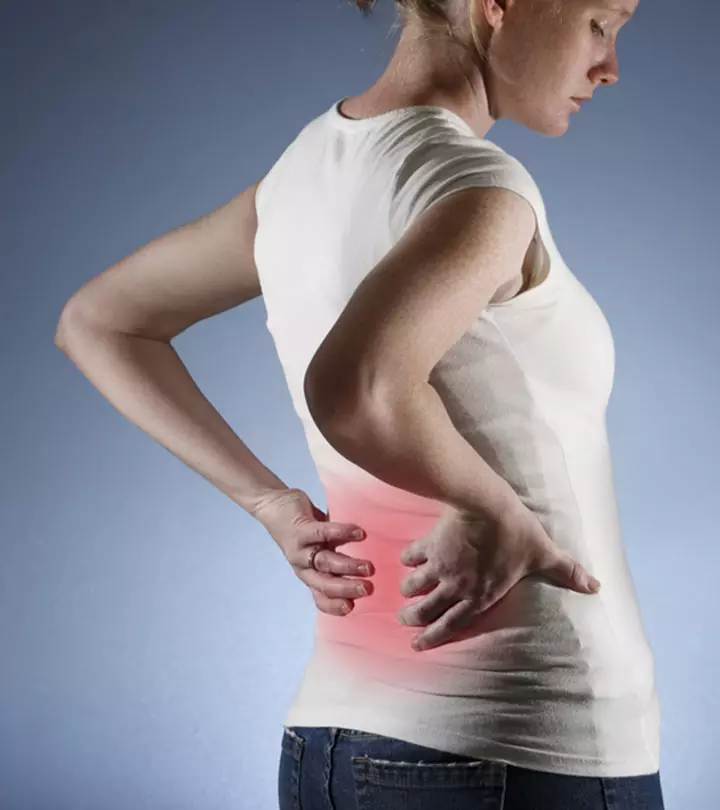








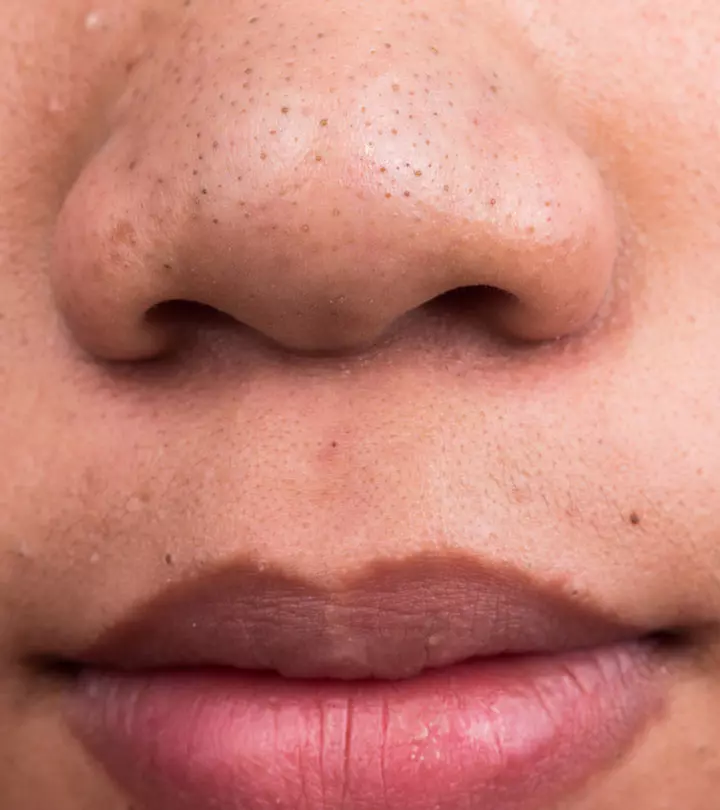



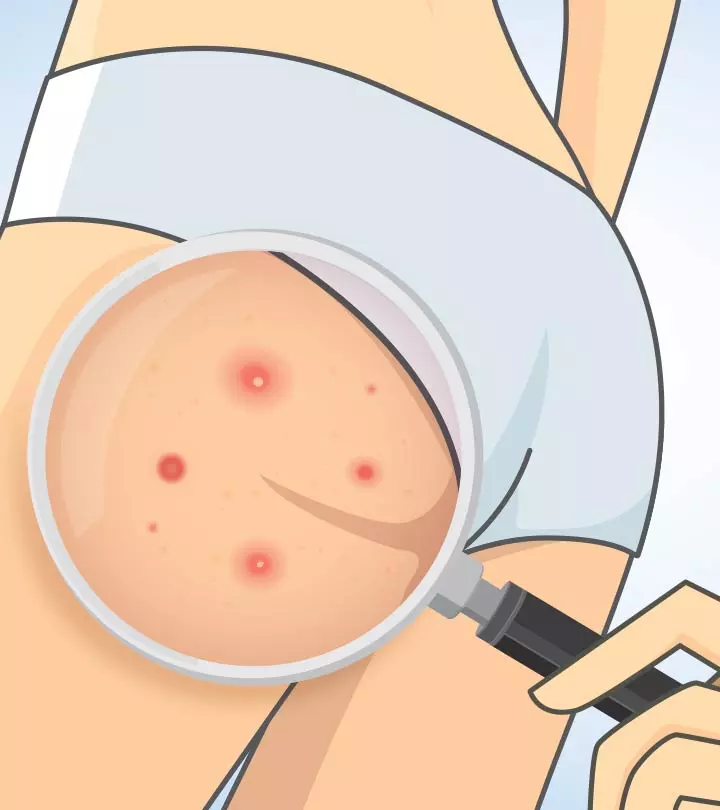


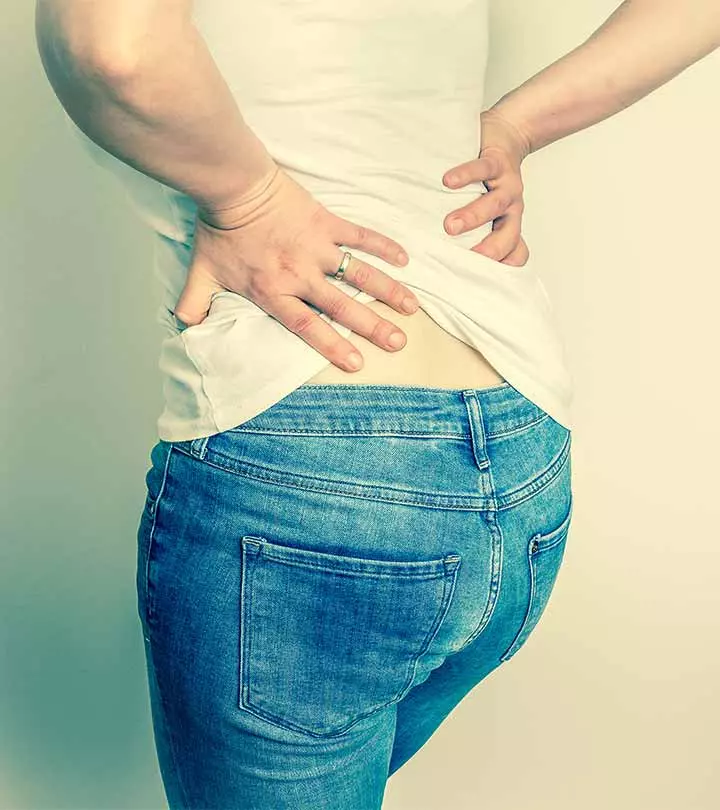
Community Experiences
Join the conversation and become a part of our empowering community! Share your stories, experiences, and insights to connect with other beauty, lifestyle, and health enthusiasts.